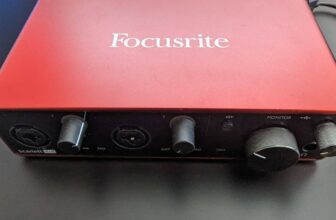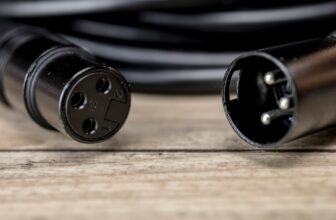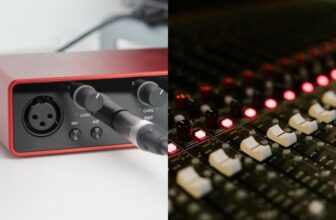How to Record Keyboards to Your Computer
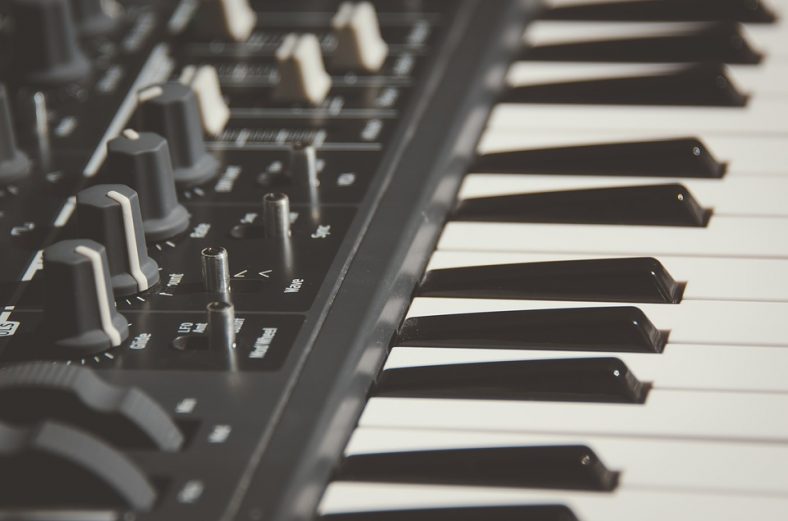
This guide provides some easy ways to record your keyboards digitally. Your goal should be to produce a high-quality sound recording that can be altered and worked with at a later time.
There are many ways to go about recording keyboards and digital pianos to computers and each of them has distinct results on the overall achievement of goals. There are two main ways that you can record from your keyboard:
1. Audio (Capture the audio output from your keyboard – it will be recorded as you hear it on your keyboard)
or
2. MIDI (Capture the note information from your keyboard and trigger external keyboard sounds on your computer – this is more complicated, but it’s a great option if you’re not happy with the sounds on your keyboard)
Contents
Download Recording Software
The next step to recording your music piece is to go for a digital audio workstation (DAW). It is a software that can edit, record, and produce audio files. The marketplace and online resources are abuzz with recording software, each claiming to be better than the other.
You should initially try to master the basics and then build up & upgrade later. Ableton Live Lite or Audacity are two free daws that assist greatly in the process of recording your instruments.
With your instrument and DAW ready to go, the next step is to connect and sync the device with your computer using any of the three methods i.e. via the audio interface; USB audio connection, or MIDI recording.
Connect Your Keyboard to Your Computer
There are 3 different methods to connect your keyboard to your computer. You only need to choose one of these.
1. Audio connection via USB Port (A great option if your keyboard supports it)
2. Audio connection via Audio Interface
3. MIDI connection
1. Recording Keyboards using your USB Port (Audio Connection)
If your keyboard supports it, this is a great option. Recording keyboards with the help of USB port connectivity is an easy process. Depending on the model, your keyboard might have a USB port that can easily sync with your computer.
The way to do it is to have the B-end of the cable plugged into the keyboard while plugging the A-end of the cable into the computer’s USB port. You will then have to install all the necessary drivers on your computer. This will sync your keyboard to the computer, allowing you to record music smoothly.
- Connect the USB output of your keyboard to the USB input of your computer.
- Open your DAW, create a new track, and set the track input to your keyboard (If you don’t see it, you may need to install drivers for your keyboard).
- Turn the volume up on your keyboard.
- Start recording on your DAW and play some keyboards.
- You should start to see some audio waves on your computer. When you are finished playing, play it back on your DAW to ensure that it has been recorded.
Note: Some keyboards have USB outputs that do not actually transmit audio information. In this case, the above will not work for you. They may only support MIDI connectivity, which we will talk about in option 3 of this article.
2. Recording Keyboards using an Audio Interface
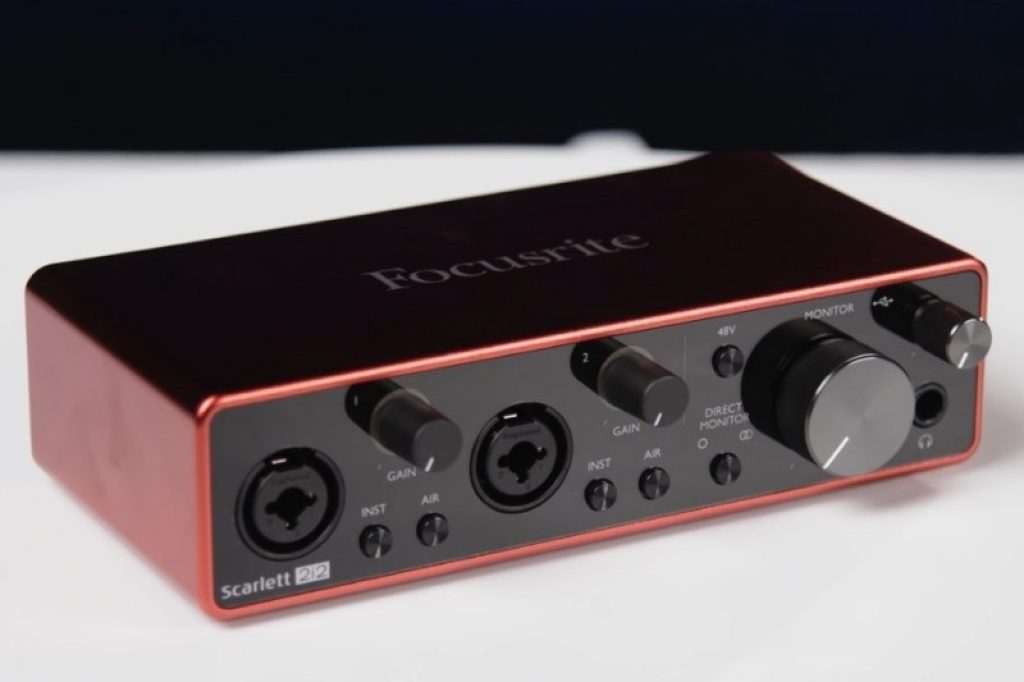
![]() An audio interface is an external piece of hardware that can easily connect with your keyboards to record the sounds. The audio interface comes with XLR inputs and/or instrument cable inputs where you can connect your instrument and output jack connections allowing for playback along with voice level monitors and gain controls to set the right level of signals.
An audio interface is an external piece of hardware that can easily connect with your keyboards to record the sounds. The audio interface comes with XLR inputs and/or instrument cable inputs where you can connect your instrument and output jack connections allowing for playback along with voice level monitors and gain controls to set the right level of signals.
The audio interface is the most integral part of home studio recording. Once you get the setup right then syncing the hardware with the computer and recording process is a piece of cake.
A great audio interface is the Focusrite Scarlet 2i2.
Steps to Record Keyboards using an Audio Interface
- The first step is to connect the audio interface to a computer through a USB cable, thunderbolt, or firewire.
- Connect the audio output of your keyboard to the audio input of the audio interface. The audio interface will have line input that enables the keyboards to record.
- The audio interface converts analog signals from the keyboard to digital which can be interpreted by your computer.
- Open your DAW, create a new track, and set the track input to your audio interface.
- Turn the volume up on your audio interface.
- Start recording on your DAW and play some keyboards.
- You should start to see some audio waves on your computer. When you are finished playing, play it back on your DAW to ensure that it has been recorded.
3. Record Keyboards using MIDI
MIDI stands for a ‘musical instrument digital interface’ which is used to record musical data into the computer. This is like a digital version of sheet music, that can be used to trigger virtual keyboard instruments on your computer.
For beginners venturing into music production, the contrasting concept of MIDI and audio interface creates confusion. While the audio interface when synced with the computer records the sound, the MIDI track, on the other hand, records the MIDI note data.
Before setting up MIDI to record the keyboard, it is important to understand that MIDI will only transmit note data, this should then trigger a digital instrument on your computer (anything from a keyboard to a drum kit!).
When a keyboard is connected with the MIDI, every key that is pressed is saved as a data form in the recording software. So, the string of keys; the pressure which is applied; the length of notes everything becomes tabulated.
But Why MIDI? Why not Just Audio Interface…
The lack of sound in MIDI tracks always gives way to the above-mentioned query. Audio interface and MIDI serve their own unique purposes. MIDI allows room for customization later on.
For instance, if you wish to hit the notes a notch higher for specific parts or you want to alter a small section of the track, MIDI is your answer. This means that once the data is recorded on the computer, the music producer can tweak the graphical music sheet to its desired levels. Therefore, MIDI allows you to edit the completed pieces with great ease.
While MIDI emulates that data of key arrangement and patterns down to finer details the audio interface records the actual audio in the form of sound waves.
You don’t need to just choose one approach: Working with an audio interface AND MIDI allows you to record both the original playback, as well as gives you the option to create new music from those MIDI notes later.
Steps to Record Keyboards via MIDI
- Usually, most keyboards come with Pre-equipped MIDI in & MIDI out ports.
- If Your keyboard has MIDI via USB
- Then you need a USB B to A type cable to initiate a connection between the instrument and computer.
- The USB port B goes into the keyboard whereas, the A-end of the cable is attached to the Computer’s USB port.
- Some versions of keyboards only have five-pin MIDI in/out ports instead of the B-type USB ports. In this case, you should either use a MIDI to USB cable or use a MIDI interface for your computer.
- In that case, the MIDI port is attached to the five-pin MIDI cable, and the USB part is connected to the computer (Alternatively, you can use a MIDI interface).
- Create a new MIDI track on your DAW.
- Set the track input to your keyboard (you may need to set up drivers on your computer for this).
- Drag a virtual keyboard instrument onto this track.
- Start playing your keyboard, pressing a key should trigger a sound from your virtual instrument.
- Once you are happy with the sound, you can press record and start playing.
In a nutshell, the synced keyboards through the audio interface & MIDI contribute to producing a high-quality sound in the comfort of your home studio. So, when it comes to the home studio setup, consider investing in an affordable audio interface as they allow you to record your audio tracks easily with a very professional touch.
Recording via MIDI is also a lot easier than it sounds. Simply just buy the relevant MIDI cable and follow the steps above. Once you have recorded the track on your DAW, it’s then very easy to export these in a variety of formats, such as .wav or .mp3.
Conclusion
Recording your keyboard or digital piano to your computer entails establishing a connection first between the devices. Also, you need the necessary gear to be able to hear the instrument and record it. This includes an audio interface, MIDI, or a simple USB connection. Follow the steps above to successfully establish this connection and record your keyboard.

